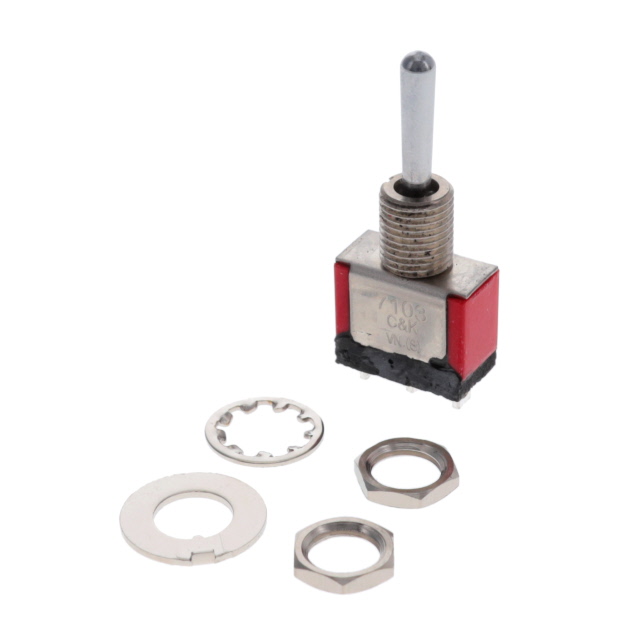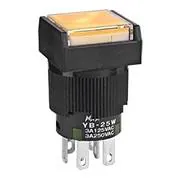
Insulated Gate Bipolar Transistor (IGBT): The Dragon Rider of High-Power Circuits
Global electronic component supplier ERSAELECTRONICS: Rich inventory for one-stop shopping. Inquire easily, and receive fast, customized solutions and quotes.
.png?x-oss-process=image/auto-orient,1/quality,q_70/format,webp)
1) What an Insulated Gate Bipolar Transistor Actually Is
The insulated gate bipolar transistor is the blockbuster crossover we didn’t know we needed: a MOSFET’s insulated gate stacked onto a BJT-like conduction stage. Practically, that means you drive it with a gate voltage (easy, like a MOSFET) but enjoy low conduction loss at high current densities (more like a BJT). In medium-to-high voltage ranges (typically 600 V to 1700 V and beyond), this combo lets an insulated gate bipolar transistor pass hundreds of amps per device with acceptable losses—assuming your gate drive and thermal story are worthy of prime time.
If Oppenheimer is the tale of unlocking raw energy, an insulated gate bipolar transistor is how you direct that energy into motor phases without making your DC link taste the fallout. It’s the reason EVs accelerate smoothly, elevators don’t lurch, PV inverters hum efficiently, and industrial drives sip power instead of guzzling.
2) Device Structure: From MOS Gate to Conducting Dragon
At a high level, an insulated gate bipolar transistor stacks a MOS gate over a p-body region, with an n- drift region and a p+ collector. The MOS channel controls injection of carriers into the drift region, and once carriers are there, conductivity modulation kicks in—flooding the silicon with minority carriers and dramatically reducing on-state voltage drop compared with a plain MOSFET at the same voltage rating.
Trench + Field-Stop
Modern insulated gate bipolar transistor parts use trench gates for strong channel control and a field-stop layer to trim electric fields and reduce stored charge. The result: lower VCE(sat) and faster turn-off than old-school punch-through designs, while keeping ruggedness intact.
Tail Current (the End-Credits Scene)
Because an insulated gate bipolar transistor relies on minority carriers, they must be swept out at turn-off. That produces the infamous “tail current”—the post-turn-off cameo that spikes switching losses. Device tech and clever gate drive mitigate it, but it’s part of the character arc.
3) Losses: Conduction, Switching, Tail Current—and How to Tame Them
The loss plot of an insulated gate bipolar transistor is a buddy-cop story: conduction losses (VCE(sat) × I) and switching losses (Eon + Eoff) share screen time. At high current, conduction dominates; at high frequency, switching steals the show. Tail current adds drama at turn-off.
- Conduction: Unlike MOSFET RDS(on), the insulated gate bipolar transistor has a quasi-constant VCE(sat) (with current and temperature dependence). Good at high current, less great at light load.
- Switching: Gate charge, Miller plateau, device charge, and snubber networks shape Eon/Eoff. Lower gate resistors speed edges but raise EMI and overshoot.
- Tail Mitigation: Field-stop designs, optimized lifetime control, and soft-switching topologies reduce losses. Smart gate shaping helps too.
.png?x-oss-process=image/auto-orient,1/quality,q_70/format,webp)
4) Gate Drive for the Insulated Gate Bipolar Transistor
A happy insulated gate bipolar transistor starts with a good gate driver. Think of the driver as the dragon whisperer: it sets temperament, speed, and how your beast reacts to trouble.
4.1 Gate Voltage & Bias
- On-state gate voltage: +15 V is classic for many insulated gate bipolar transistor families; some go +18 V. Too low raises VCE(sat), too high stresses the oxide.
- Off-state bias: 0 V often works; −5 V to −8 V helps against dv/dt-induced turn-on in noisy half-bridges. Use a Miller clamp if the driver offers it.
4.2 Gate Resistors & Slew Control
Separate Rg,ON and Rg,OFF or split resistors + diodes let you tune Eon, Eoff, and overshoot independently. For parallel devices in a module, add small series gate resistors per die or per emitter leg to damp current sharing oscillations.
4.3 Isolation & Power
Use isolated gate drivers for high-side legs and at higher bus voltages. Budget gate power: Pgate ≈ Qg × VGE × fs (plus driver quiescent). Bootstrap supplies work in low-side referenced legs; otherwise use isolated DC-DC supplies.
// Pseudocode: adaptive gate control for an insulated gate bipolar transistor
if (desat_detected) {
clamp_gate_voltage();
soft_shutdown_slew();
report_fault_and_latch();
} else {
drive_gate( target = +15V, Rg_on, Rg_off, miller_clamp = true );
if (overtemperature || overcurrent_warning) slow_edges();
}5) Protection: DESAT, Soft Shutdown, and Real-World SOA
An insulated gate bipolar transistor is rugged—but not invincible. Protection is your plot armor.
- DESAT detection: A diode senses VCE. If the insulated gate bipolar transistor fails to saturate (short-circuit or turn-on into fault), the driver triggers soft shutdown.
- Soft shutdown: Bleeds gate charge through a controlled path, keeping di/dt tame while saving the device and load.
- Short-Circuit Withstand Time (SCWT): Typically ~5–10 µs for many devices—your protection must act faster than the villain monologue.
- SOA (RBSOA/SCSOA): Respect safe operating curves at temperature and bus voltage. Validate with your actual stray inductances and snubbers.
6) Packaging & Modules: From TO-247 to Dual-In-Line Dragon Saddles
You’ll meet the insulated gate bipolar transistor in discrete packages (TO-247, TO-220) and in power modules (EconoDUAL™, IHM, Easy, etc.). Modules integrate multiple IGBTs, freewheel diodes, NTC sensors, and Kelvin connections in low-inductance layouts with chunky terminals your busbar will adore.
Discretes
Quick prototypes and lower power. Watch thermal pads and creepage.
Half-/Full-Bridge Modules
Low stray L, integrated NTC, clean current loops—ideal for traction and drives.
Press-Pack
Symmetric pressure contact, excellent cycling and short-circuit behavior—heavy industry vibes.
.png?x-oss-process=image/auto-orient,1/quality,q_70/format,webp)
7) Layout, Parasitics, and EMI: dv/dt, di/dt, and Snubbers That Work
The layout around an insulated gate bipolar transistor is as important as the device choice. Inductance turns every transition into a jump scare.
- Loop area: Minimize the DC link + switch + diode loop. Use laminated busbars in modules.
- Kelvin emitter/source: Separate power and sense returns so the gate sees the real emitter potential.
- Snubbers: RC across device or RCD across diode can tame overshoot. Measure, don’t guess.
- dv/dt control: Tune Rg, enable Miller clamp, and mind stray capacitances to prevent false turn-on.
8) Thermal Design: Junctions, Cases, Sinks, and Mission Profiles
The best insulated gate bipolar transistor dies quietly… of boredom, not heat. Thermal design is the long game.
- ZthJC & RthJA: Use transient thermal impedance to model pulses (PWL or Foster/Cauer). Don’t size sinks on DC averages if your load is choppy.
- TIM & flatness: Paste or pad matters. Torque specs and surface prep buy real °C.
- NTC feedback: Many modules embed an NTC—use it for derating and logging.
- Mission profiles: EV hills, wind gusts, welding duty cycles—feed real usage into your loss model.
9) Applications: EV Traction, PV Inverters, Drives, Welding, Induction
The insulated gate bipolar transistor is the working actor in a lot of gigs:
EV Traction Inverters
600–1200 V bus, high phase currents. Modules with low L and great SCWT are the heroes. Gate drivers with DESAT and soft shutdown are non-negotiable.
PV / Wind Inverters
DC-AC conversion at 600–1500 V. Efficiency matters, but so do reliability and grid codes. The insulated gate bipolar transistor balances cost and performance.
Industrial Drives
From conveyors to elevators. Torque ripple and EMI compliance sit on your gate resistor choices and filter design.
Welding & Induction
Rugged short-circuit behavior is priceless here. The insulated gate bipolar transistor survives arcs and angry loads when protected correctly.
.png?x-oss-process=image/auto-orient,1/quality,q_70/format,webp)
10) IGBT vs SiC MOSFET vs Si MOSFET: Who Stars in Which Spin-Off?
| Tech | Voltage Range | Strengths | Watch-outs | Where It Wins |
|---|---|---|---|---|
| Insulated Gate Bipolar Transistor (IGBT) | 600–1700+ V | Low conduction loss at high current, mature modules, robust SCWT | Switching/tail losses; lower efficiency at light load | EV traction, industrial drives, PV, welding, induction |
| SiC MOSFET | 650–3300+ V | Fast switching, low Eon/Eoff, high temp, great partial-load efficiency | Cost, gate drive nuances, short-circuit limits | High-freq inverters, chargers, PFC, aerospace |
| Si MOSFET | ≤ 600–900 V typical | Low Qg, cheap, great at light load and high freq at low V | RDS(on) balloons at high V/current | Low-voltage SMPS, DC-DC, synchronous rectification |
11) How to Read an Insulated Gate Bipolar Transistor Datasheet
- VCE(sat) vs I, T: Plot your operating point; watch temperature drift.
- Eon/Eoff: Note test conditions (L, Rg, diode type). Your circuit will differ.
- SOA: Read RBSOA/SCSOA at your bus voltage and temperature. Respect it.
- Gate charge Qg & VGE: Size drivers and supplies accordingly.
- Module diagrams: Kelvin emitter pins, NTC, internal diode ratings—gold for layout.
12) Reliability & Ruggedness: Cosmic Rays, Humidity, and Cycling
Every insulated gate bipolar transistor lives a life of thermal cycles, voltage swings, and the occasional cosmic-ray cameo (single-event burnout risk rises with voltage and altitude). Reliability is a systems job:
- Power cycling: Solder and bond wires fatigue. Modules and press-packs manage stress better.
- HTRB/H3TRB: Humidity + bias testing matters for long warranties. Keep housings dry and seals honest.
- Partial discharge & insulation: At 1200–1700 V, creepage and insulation housekeeping become non-negotiable.
.png?x-oss-process=image/auto-orient,1/quality,q_70/format,webp)
13) Models & Simulation: SPICE, PLECS, and Loss Estimation
Simulate your insulated gate bipolar transistor with vendor models, but calibrate to lab data. Switching energy is notoriously context-dependent—parasitics, diode choices, and gate resistors shift everything.
- Loss splits: Compute conduction (I × VCE(sat)) + switching (Eon + Eoff) × fs + driver losses.
- Thermal tie-in: Pipe losses into Zth(t) for temperature prediction across your mission profile.
- Control interactions: In motor drives, PWM strategies alter Eon/Eoff; try space-vector vs sinusoidal and compare EMI.















.png?x-oss-process=image/format,webp/resize,h_32)










